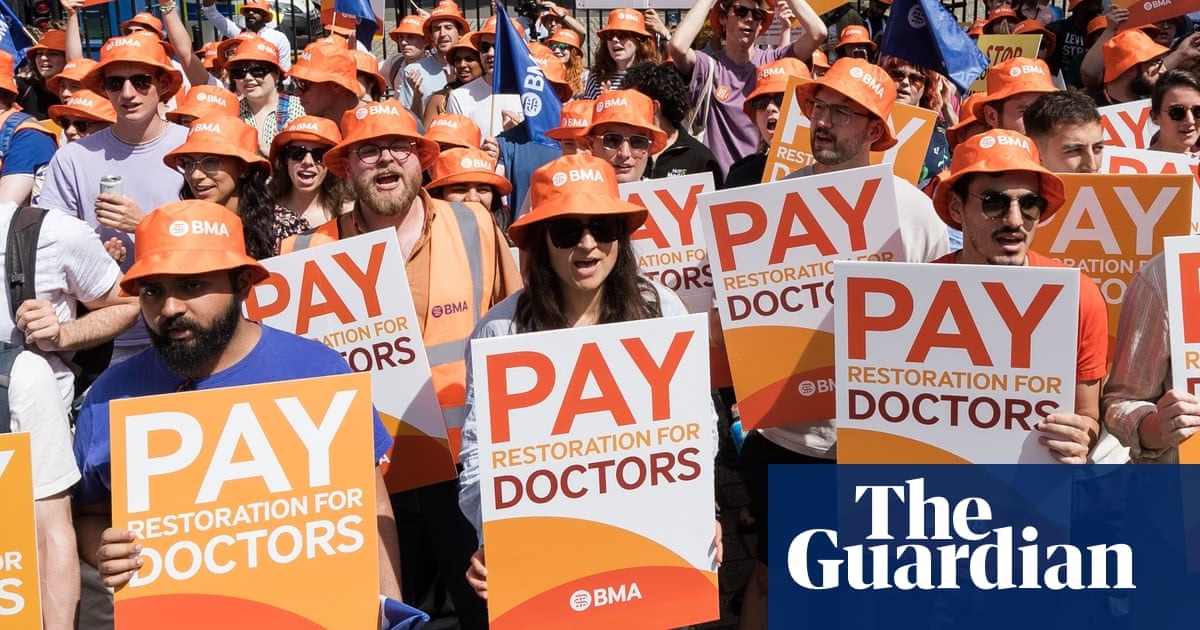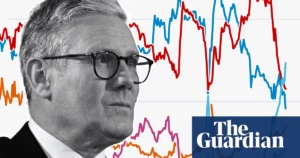The successful effort of Eastbourne’s refuse collectors to secure an 11% pay increase, rising to 19% for the lowest earners, initially suggested a resurgence of worker power in early 2022. As inflation soared towards a peak of 11%, workers across both the public and private sectors in the UK took widespread industrial action in a manner reminiscent of the 1970s. This led to a series of hard-negotiated pay deals, with unions frequently contending that increases were long overdue.
A comparable scenario is emerging now, albeit more stealthily. The Bank of England notes that wages have continued to rise quietly over the past year, creating concerns about a fundamental shift in the dynamics between employees and employers. Recent public sector pay awards exceed what ministers had suggested they could afford and surpassed higher than anticipated inflation—though these were deemed “derisory” by discontented doctors. However, office job relations have been strained by the shift towards remote work due to the pandemic and companies’ insistence on greater workplace attendance.
The question on Threadneedle Street is whether these wage increases indicate a power shift back towards workers, enabling them to protect their finances regardless of economic fluctuations, including the shocks of conflicts and trade skirmishes.
Data from the Office for National Statistics (ONS) supports this view. It shows that the hotel and restaurant sectors, where inflation-adjusted pay increased by 8.5% in the year to April, eclipsed the 3.5% inflation rate. Retail workers managed a 6.9% median pay increase over the same period. The average increase across the economy was 6.4%.
The central bank’s chief economist, Huw Pill, believes the UK’s labor market is becoming less flexible, with employers struggling to freely hire and fire. Despite layoffs and job advertisements being frozen, remaining employees are being generously compensated. Wages, adjusted for inflation, have rebounded to levels seen before the cost of living crisis began in 2021. The share of national income secured by workers has also returned to 2021 levels.
Prominent economist Ben Caswell from the National Institute of Economic and Social Research (NIESR) is sympathetic to Pill’s viewpoint. Despite disparities in average pay figures, he argues that most workers have benefited from pay rises, recovering lost ground from inflation. Caswell emphasizes a recent measure showing a rise still well above inflation at 5.6% in January to March 2025 in Great Britain, though less than PAYE data indicates.
A series of minimum wage increases narrowing the gap with average wages will likely fuel further pay rises as companies seek to maintain significant salary differences between entry-level employees and those more advanced.
Research Director at the Resolution Foundation, James Smith, casts doubt on the long-term recovery of wages, suggesting the current economic outlooks disfavor sustained pay growth. He compares the inconsistent pay figures to the cartoon character Wile E. Coyote, suggesting they may soon face a return to economic reality.
While public sector workers may not see pay raises above 4% on average, and future departmental budgets are set to be tightened, there are reasons for exaggerated pay increases across certain industries recently. Construction workers, for example, have seen a 6.7% wage rise after a difficult period, aligning with government initiatives in building more homes.
Any market shift could be linked to the high demand for digital skills, with employers seeking to hold onto skilled staff and adapt to an ever-evolving workplace. This represents additional costs for employers, including increased minimum wages and national insurance contributions.
Principal economist at the Institute for Employment Studies, Seemanti Ghosh, attributes the shift to the need for workers with adaptability and specialized skills, particularly in the green sector. The debate on how permanent these changes will be and their impact on wages remains ongoing. Bank of England’s chief economist Pill prefers to keep interest rates elevated, while others on the MPC argue that high borrowing costs impede businesses from investing in workforce training. The MPC’s differing views will likely influence who holds the upper hand in compensation disputes.
Source: https://www.theguardian.com/business/2025/may/25/who-is-calling-the-shots-when-it-comes-to-uk-wage-levels-workers-or-bosses







